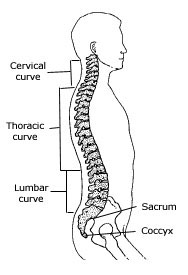Training by yourself can be very productive. The temptation for time wasting gym banter is gone–it’s just you and the bar. I think the increased focus alone makes solo training worthwhile. Of course, there are a few drawbacks. Without someone watching your form, it can be hard to know what you are doing wrong. Furthermore, the lack of a spotter means you have to lift conservatively unless you feel like getting squished under a loaded barbell in front of everyone.
Whether you haven’t made any gym buddies yet, or you just don’t get along with people, there will probably be a time when you gotta go rogue and lift all by your lonesome. Don’t worry though, I got your back. Here’s how to be your own coach.
If it hurts, you’re doing it wrong
This comes first because it is the most important. “Do no harm” should be written on the wall of every gym. Regardless of your goal, the way you perform an exercise should be productive(duh). Now, weightlifting definitely isn’t supposed to tickle, but there is a difference between the discomfort that comes with working a muscle and joint pain. I define “good form” as whatever allows you to lift the most weight and achieve your goals in the safest manner.
Film your lifts
A good coach is invaluable. However, if you are training solo you don’t have this luxury. This means you must be discerning and act as your own second set of eyes. Filming your big lifts can negate many of the problems of training without a spotter. Analyzing the footage of your lifts allows you to see potential flaws in technique that would otherwise go unnoticed. This will give you better direction in making changes in technique.
Research
Like Camelot, the Internet tis a silly place which I recommend avoiding if possible.
However, when you are your own coach, it’s your responsibility to answer your own questions and quandaries. Navigating the seas of fitness nonsense can become much more effective by keeping in mind the following questions:
-What population/skill level is this article catered to? Is this relevant to me?
– Is this written for people with my goals?
-How reliable is the source?
-Does this make sense? Are there any red flags that are making my bullshit detector go off?
I also recommend limiting your research to 2 or 3 reliable sources. Below I’ve included the links to the sites of some of the most legit coaches in the business.
Dan John-http://danjohn.net/
Bret contreras-http://bretcontreras.com/
Nia shanks-http://www.niashanks.com/
Tony gentilcore-http://tonygentilcore.com/
Jordan syatt-http://www.syattfitness.com/
Jen sinkler-http://www.jensinkler.com/
Dean someset-http://deansomerset.com/
There are plenty of other incredible coaches out there, but much can be learned by keeping up with the work of just a few of these coaches.
Keep your damn back flat(most of the time)
As a general rule, when lifting heavy shit, your back should stay in a neutral position. What this means is that the lower back is slightly arched and your upper back has a natural curve. Your spine should look like a subtle “S”. In most cases this is the safest position for the back.
Your goal when doing heavy squats, deadlifts etc. should be to make your spine a rigid, unmoving, steel rod throughout the lift. Now, this doesn’t mean that if your back rounds slightly during a maximum effort deadlift you’re going to die, but it’s less than ideal in this context. That said, there are some times when rounding or arching can be beneficial. After all if the spine wasn’t meant to move it would be a bone. If you want to know more about this topic, check out this piece by Tony Gentlecore:http://tonygentilcore.com/2015/04/defending-spinal-flexion-its-not-always-the-evil-step-child-we-make-it-out-to-be/
Determine why you are doing an exercise
“Good technique” depends on what you are trying to get out of an exercise. Figure out the goal, then use that to judge whether or not your technique is proper. For example, if I am using glute bridges to make my butt bigger, I will use my glute development as the criteria upon which I judge my technique. Are my glutes more developed than they were 3 weeks ago? If not, I can experiment with different foot positions. After a few weeks I can assess. Was the new foot position better or worse for glute development? Yes? Awesome! No? Keep experimenting. And so on and so forth.
Keep a training log
Record all of your lifts, reps, and sets. This is the bare minimum.
You can also track volume, how difficult each lift was, etc. However, this isn’t necessary. Your training log is how you figure out what works and what doesn’t. Beyond what was discussed in the last section, pay attention to personal records. Are you lifting heavier weights? Are you lifting the same weight more times? Did you lift the same weight with better technique and more ease? These are all ways to measure if your technique is safe and effective. Make a note of your PRs(personal records) and any training epiphanies you have. If something works, keep doing it. If it doesn’t work, scrap it. Taking an intentional training log is a necessary tool and will help you continue to refine your technique and training strategy, especially if you’re going it alone.
Like training solo, but need just a little bit more guidance? I’m currently accepting online coaching clients and I would love to help you lose weight and feel better. Online coaching offers the same results as in person coaching, but for a lot less ca$h and with a lot more flexibility.
Curious about how it works? Fill out a super brief form here http://mortontrainingsystems.com and let’s set something up!

